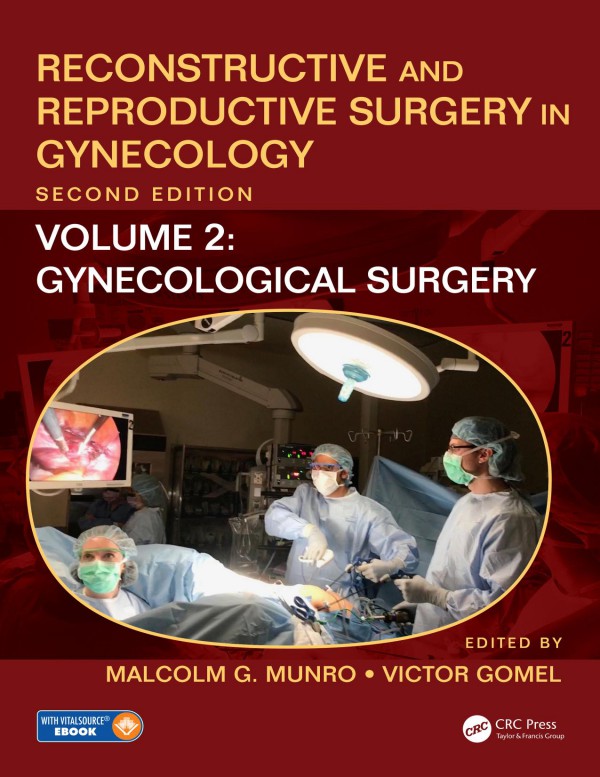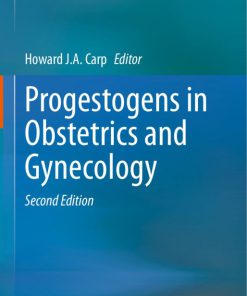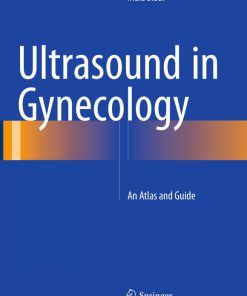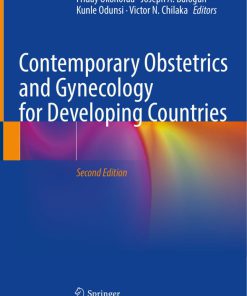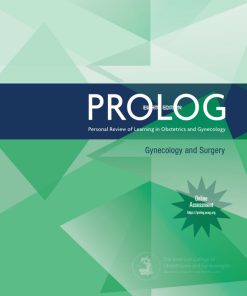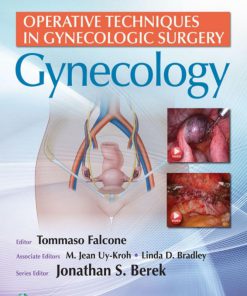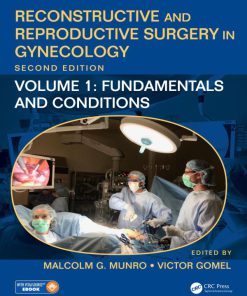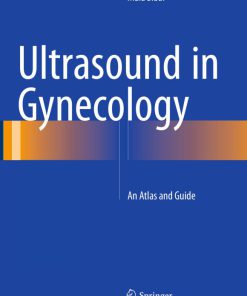(Ebook PDF) Reconstructive and Reproductive Surgery in Gynecology 2nd Edition by Malcolm Munro 0429853904 9780429853906 full chapters
$50.00 Original price was: $50.00.$25.00Current price is: $25.00.
Authors:Malcolm G. Munro , Series:Gynecology & Obstetrics [93] , Tags:Volume Two: Gynecological Surgery , Author sort:Munro, Malcolm G. , Languages:Languages:eng , Published:Published:Feb 2019 , Publisher:CRC Press
Reconstructive and Reproductive Surgery in Gynecology 2nd Edition by Malcolm G. Munro – Ebook PDF Instant Download/DeliveryISBN: 0429853904, 9780429853906
Full download Reconstructive and Reproductive Surgery in Gynecology 2nd Edition after payment.
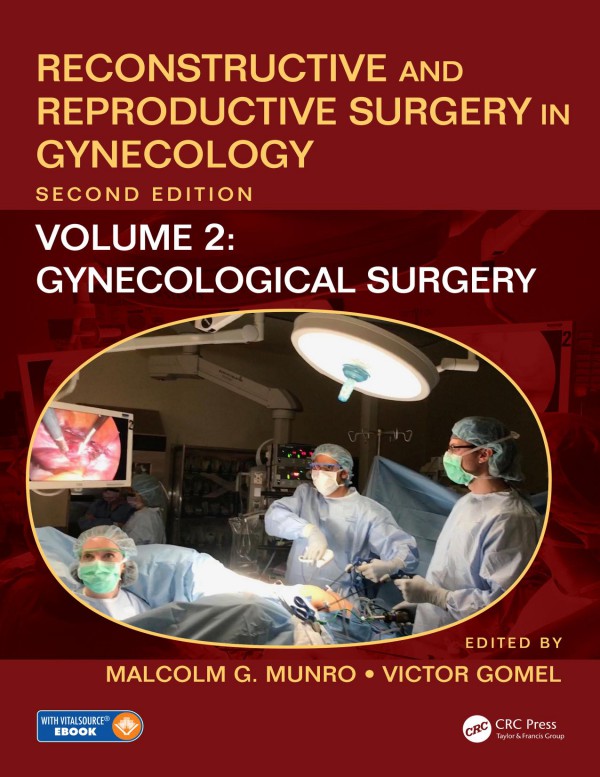
Product details:
ISBN-10 : 0429853904
ISBN-13 : 9780429853906
Author : Malcolm G. Munro
This new edition of a groundbreaking book is now in two volumes, on ‘Fundamentals, Symptoms, and Conditions‘ on ‘Reconstructive and Fertility Preserving Surgery and Procedures. From a distinguished editorial team and internationally recognized contributors the text educates surgeons on the techniques and procedures now needed in gynecology, with a special focus on reconstructive vaginal, hysteroscopic, laparoscopic, and laparotomic surgery, including that designed to preserve or enhance fertility. The reader can now more readily understand pathogenesis, appropriate investigation, and application of both surgical and nonsurgical strategies and techniques. The two volumes contain over 20 new chapters and in the integral ebook, over 140 instructional videos; each chapter has Key Points summarized.
Reconstructive and Reproductive Surgery in Gynecology 2nd Table of contents:
Chapter 29 Surgery for congenital anomalies: Hysteroscopic, laparoscopic, laparotomic, and vaginal
Introduction
Vaginal and cervical
Transverse vaginal septum (CONUTA V3)
Longitudinal vaginal septum (CONUTA V1 and V2)
Müllerian anomalies affecting the uterus
rAFS Class I-hypoplasia/agenesis (CONUTA U5)
Mayer–Rokitansky–Kuster–Hauser (MRKH) syndrome (CONUTA U5b-C4-V4)
Cervical agenesis (CONUTA C3 [unilateral aplasia] or C4 [cervical aplasia])
Unicornuate uterus (rAFS Class II; CONUTA U4-C3)
Didelfic uterus (rAFS Class III; CONUTA U3b-C2)
Bicornuate uterus (rAFS Class IV; CONUTA U3a, b, and c-C0)
Septate (rAFS Class V; CONUTA U2-C0/1)
Arcuate (rAFS Class VI; CONUTA-No categorization)
Diethylstilbestrol (DES)-related anomalies (rAFS Class VII)(CONUTA U1)
Videos
Chapter 30 Surgery for vulvar disorders
Vestibulectomy
Informed consent
Performing a complete vestibulectomy
Postoperative care
Hymenectomy
Informed consent
Performing hymenectomy
Postoperative care
Reduction labiaplasty for labia minora hypertrophy
Informed consent
Performing reduction labiaplasty of the labia minora—curvilinear technique
Bartholin duct cyst and Bartholin abcess management
Word catheter placement
Marsupialization
Bartholin gland excision
Vulvar intraepithelial neoplasia
Laser vaporization of the vulva
Informed consent
Laser ablation procedure
Postoperative care
Wide local excision of the vulva
Informed consent
Wide local excision procedure
Postoperative care
Video
Chapter 31 Endometrial sampling and uterine curettage
Indications for Sampling
Pre-menopausal women
Post-menopausal women
Choice of Sampling Technique
Techniques
Endometrial suction/aspiration biopsy
Dilation and curettage
Selection of sampling technique
When a focal lesion is suspected
Endometrial sampling procedures
Suction endometrial sampling
Setting
Materials
Technique
Dilation and curettage
Setting
Materials
Technique
Difficulties and Complications
Hysteroscopically guided curettage/hysteroscopy with guided biopsy
Hysteroscopy and intrauterine malignancy
Setting
Materials
Technique
Difficulties and complications
Hysteroscopy with endometrial resection
Setting
Surgical management of retained products of conception (RPOC)
General considerations
Uterine curettage
Hysteroscopic removal of RPOC
Comparison of methods
Conclusions
Videos
Chapter 32 Management of endometrial polyps
Expectant Management
Medical management
Local Surgical Management
Blind removal
Hysteroscopic resection
Scissors and graspers
Resectoscopic polypectomy
Needle electrodes
Electromechanical hysteroscopic morcellators
Image-guided polypectomy
Radical surgical management
Clinical outcomes
Abnormal bleeding outcomes
Adhesion formation
Recurrence risk
Conclusions
Videos
Chapter 33 Endometrial ablation
Resectoscopically directed endometrial ablation (REA)
General concepts
Investigation
Medical preparation of the endometrium prior to REA
Device selection
Distending media
Accessing the endometrial cavity
Radiofrequency (RF) REA techniques
Electrocoagulation/desiccation
Endometrial resection
Endometrial vaporization
Complications of REA
Randomized trials comparing hysterectomy to REA
Factors affecting outcome of REA
Non-resectoscopic endometrial ablation (NREA)
Introduction
NREA devices
Hyperthermal balloons
Heated fluid or vapor
Cryoablation systems
Radiofrequency electrosurgical endometrial ablation devices
Microwave endometrial ablation
Factors affecting outcome of NREA
NREA device comparisons
NovaSure to hyperthermal balloon
Hyperthermal balloon to LNG-IUS
NovaSure to HTA
Summary for Endometrial Ablation for AUB-O and -E
Videos
Chapter 34 Surgery for intrauterine adhesions
Introduction
History
Surgeon Requirements
Hysteroscopic Techniques
Simultaneous Image Guidance
Adjuvant measures and postoperative care
Surgical Outcome
Summary
Videos
Chapter 35 Leiomyomas I: Hysteroscopic and other transvaginal approaches
Introduction
Background
Pre-operative issues
Leiomyoma location
Leiomyoma volume
Leiomyoma number
Leiomyoma outer or lesion free margin (OFM)
Potential for endometrial trauma and myometrial damage
Pre-Operative Preparation
Pre-operative cervical preparation
Endometrial preparation
Leiomyoma preparation
General medical preparation
Surgical procedures
Techniques for small type 0 leiomyomas (<1 cm)
Technique for larger submucous leiomyomas (≥1 cm)
Radiofrequency resectoscopic techniques
Leiomyoma vaporization techniques
Electromechanical morcellation techniques
Vaginal myomectomy
Endometrial Ablation for AUB-Lsm
PostOperative Care and Counseling
Videos
Chapter 36 Leiomyomas II: Abdominal approaches
Introduction
Preoperative evaluation and preparation
Imaging
Treating preoperative anemia
Medical suppression of uterine bleeding
Laparotomic (abdominal) myomectomy
General considerations
Laparotomic myomectomy and reproductive outcomes
Surgical technique for laparotomic myomectomy
Mini laparotomy myomectomy
Laparoscopic myomectomy
General considerations
Adverse events
Utility of the laparoscopic approach
Reproductive outcomes
Uterine rupture
Operative technique for laparoscopic myomectomy
Microprocessor-assisted laparoscopic myomectomy (“robotic” surgery)
Utility of “robotic” assistance
Technique
Summary
Videos
Chapter 37 Leiomyomas III: Image-guided surgery and procedures
Introduction
Volumetric radiofrequency ablation
History of procedure
Review of the technology
Procedure variations
Laparoscopic approach
Transcervical approach
Patient selection
Anesthesia
Postoperative management
Analgesia
Recovery/Return to activities of daily living
Clinical and imaging outcomes
Laparoscopic RFA
Transcervical RFA
Risks and complications
Impact on future fertility and pregnancy
Comparisons with other minimally invasive surgical procedures
Uterine artery embolization
History of the procedure
Procedure overview
Patient selection and preparation
Procedure performance
Post-procedure management
Complications
Efficacy
Impact on future fertility and pregnancy outcomes
Image-guided high frequency focused ultrasound
History of the procedure
How the procedure is performed
Procedure overview
Patient selection and preparation
Procedure performance
Efficacy
Impact on future fertility and pregnancy outcomes
Conclusions
Videos
Chapter 38 Hysterectomy
Introduction
Indications
Alternatives to Hysterectomy
Routes and Approach
Total versus supracervical hysterectomy
Radical hysterectomy
Factors affecting route (Patient, surgeon skill level)
Consent and pre-op preparation
Patient positioning and bladder preparation
Laparotomic (“total abdominal”) hysterectomy
Uterine manipulation
Entering the retroperitoneal space and identifying the ureter
Management of the IP ligament or triple pedicle
Bladder dissection
Posterior dissection
Uterine vessels
Colpotomy and closure
Finishing up
Vaginal hysterectomy
Peritoneal entry
Securing pedicles
Adnexectomy
Cuff closure and apical suspension
Finishing up
Laparoscopic hysterectomy
Conventional laparoscopic hysterectomy
Peritoneal entry
Round ligaments and adnexectomy
Bladder dissection
Uterine vessels
Colpotomy
Specimen removal
Closure of the vaginal vault
Microprocessor-assisted (“Robotic”) laparoscopic hysterectomy
Single incision laparoscopic hysterectomy
Complications
Videos
Chapter 39 Reconstructive surgery of the fallopian tube
Developments and trends
In vitro fertilization versus reconstructive tubal surgery
Fertility-promoting procedures
Microsurgical technique
Reconstructive surgery for distal tubal disease
Salpingo-ovariolysis
Fimbrioplasty
Technique
Results
Salpingostomy
Technique
Results
IVF and hydrosalpinx
Salpingostomy for reversal of fimbriectomy
Tubal anastomosis
Principles of microsurgical tubal anastomosis
Technical variations
Results of tubo-tubal anastomosis for reversal of sterilization
Factors affecting outcome
Tubo-cornual resection and anastomosis for proximal tubal disease
Technique
Results
Rare and complex procedures
Tubo-ovarian transposition
Summary
Videos
Chapter 40 Ectopic pregnancy: Surgical management
General Principles of Surgical Management
Surgical Access by Laparotomy
Surgical Access by Laparoscopy
Surgical techniques
Salpingectomy
Ablation of the gestational site
Segmental excision
Linear salpingotomy
Tubal abortion
Cornual pregnancy
Heterotopic pregnancy
Methotrexate as an Adjuvant to Conservative Surgery
Postoperative care
Reproductive outcome
Videos
Chapter 41 Ovarian surgery
Preoperative Assessment
Laparoscopic peritoneal access
Intraoperative assessment
Surgical management
Ovarian cystectomy—simple cysts
The issue of cyst rupture
Technique
Ovarian cystectomy—teratomas
Oophorectomy and adnexectomy
Oophorectomy
Adnexectomy
Opportunistic salpingectomy
Ovarian torsion
Paraovarian Cysts
Polycystic ovarian syndrome
Endoscopic treatment of PCOS
Technique
Videos
Chapter 42 Endometriosis I: Surgery for endometriosis associated with pain
Introduction
Mechanisms of pain from endometriosis
Diagnosis
Excisional and ablative surgery
General concepts
Techniques
Endometriomas
Retroperitoneal disease
Adhesions and adhesiolysis
Outcomes of excisional and ablative therapy
Pelvic denervating procedures
Presacral neurectomy
Laparoscopic uterosacral nerve ablation
Hysterectomy
Perioperative medical treatment of endometriosis for pain
Combined oral contraceptives and intrauterine progestins
Systemic progestins
Conclusions
Chapter 43 Endometriosis II: Surgical treatment of endometriosis associated with infertility
Introduction
Issues of treatment trial study design and analysis
The problem of diagnosis
Issues with study design
Issues with outcome measures
Surgical management of endometriosis-related infertility
Surgical techniques
Method of access
Method of destruction of implants
Results of surgical treatment of endometriosis-associated infertility
Stage I and II (early-stage endometriosis)
Stage III and IV (advanced endometriosis)
Ovarian endometriosis
Deep infiltrating endometriosis
Predicting the effect of surgery on fertility
Surgical therapy: Conclusions
Chapter 44 Endometriosis III: Deep infiltrating endometriosis
Compartmentalization of Pelvic Deep Endometriosis
Preoperative planning
Clinical history and physical examination
Radiologic imaging
Transvaginal ultrasound (TVUS)
Magnetic resonance imaging (MRI)
Adjunctive imaging/diagnostic techniques
Consultation and teamwork
Surgical approach
Operating room set up and equipment
Optimizing the surgical exposure (Video 44.2)
Restoring anatomy
Assessment and surgical excision based on the extent of involvement
Involvement of the anterior compartment (bladder and ureter)
Middle/lateral compartment disease (ovary and uterus)
Posterior compartment disease
Appendectomy (Video 44.6)
Confirmation of Visceral Integrity
Other considerations
Anti-adhesion adjuvants
Nerve sparing surgery
Videos
Chapter 45 Procedures specific for chronic pelvic pain
Introduction
Presacral neurectomy for primary dysmenorrhea
Uterine retroversion
Adnexal torsion
Ovarian remnant syndrome
Ovarian retention syndrome (residual ovary syndrome)
Pelvic adhesiolysis
Pelvic congestion syndrome
Procedures for levator myalgia and myofascial pelvic pain syndrome
Trigger point injections
Botulinum toxin injection
Neuromodulation
Video
Chapter 46 Surgical treatment of urinary incontinence
Introduction
Retropubic slings
Background
Procedure
Instrumentation
Surgical technique
Clinical results
Transobturator slings
Background
Out-in slings
Instrumentation
Surgical technique
In-out slings
Instrumentation
Surgical technique
Clinical results
Mini slings/single incision slings
Background
Surgical technique
Peri- and postoperative management
Preoperative
Postoperative
Bladder management
Postoperative analgesia
Resumption of normal activities
Follow-up visits
Comparisons and indications
Retropubic vs. transobturator slings
Mini slings vs transobturator slings
Slings and reoperation
Slings and pregnancy
Conclusion
Videos
Chapter 47 Management of pelvic organ prolapse
Treatment overview
Indications for treatment
Treatment options
Choosing a treatment
Pessaries
Choosing a pessary
Pessary fitting and maintenance
Results
Surgical management
General concepts
Surgical goal and limitations
Surgical approach
Choosing a surgical repair
Obliterative repairs
Techniques
Results
Native tissue repairs
Results
Vaginal repairs for posterior prolapse
Techniques
Results
Vaginal repairs for apical prolapse
Techniques
Results
Compensatory repairs for POP
Techniques
Results
Abdominal compensatory repairs for posterior prolapse
Technique
Results
Concurrent procedures
Conclusions
People also search for Reconstructive and Reproductive Surgery in Gynecology 2nd:
what is robotic gynecologic surgery
what is female reconstructive surgery
types of reproductive surgery
what is reconstructive pelvic surgery
reconstructive gynecologic surgery

